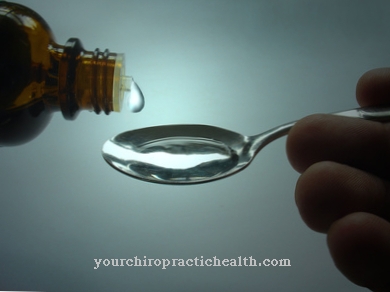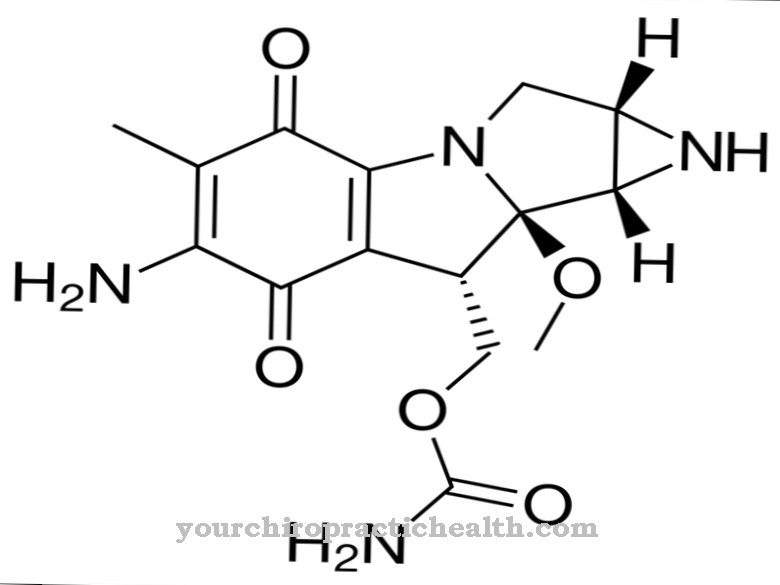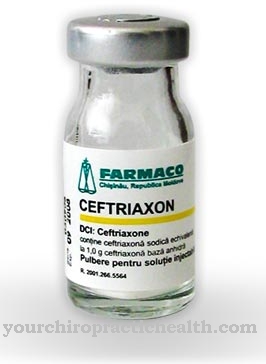Acarbose is an active ingredient for lowering blood sugar levels after meals. It is therefore one of those drugs that are used therapeutically in the context of type 2 diabetes mellitus.
What is acarbose?

Acarbose itself is a sugar and is obtained from the primary substance Actinoplanes utahensis through the fermentation process. Due to its special structure, it has a mode of action to combat diabetes.
The corresponding drug is supposed to slow down the breakdown of sugar after a meal and regulate the absorption of glucose by the body. This avoids an immediate rise in blood sugar levels. Acarbose is currently offered as tablets with different dosages.
In addition, the preparations are regularly provided with other ingredients to normalize the insulin level. Administration in the form of a white powder is less common. As such, however, the remedy would also be soluble in water and could therefore be given to children or people with difficulty swallowing.
Pharmacological effect
The food that reaches the stomach and intestinal tract is processed by the organism. Here, among other things, the glucose and the carbohydrates are broken down. These can get through the intestinal walls into the bloodstream and cause an increase in blood sugar levels there.
Such a shortcoming turns out to be particularly serious for people with diabetes. Such fluctuations - rapid rise and equally rapid fall - in the insulin level should be avoided by acarbose. For this, the resulting alpha glucosidases are bound by the acarbose. In this process, sugars or carbohydrates break down and become inactive. You can now no longer enter the bloodstream.
The increase in insulin values is at least slowed down after the meal and is no longer exposed to significant fluctuations. Sucrose has been used more frequently for a similar process in the last few decades. Compared to acarbose, however, it has a significantly lower binding value for glucose. The medication is also taken orally and only in conjunction with general diabetes therapy. It therefore depends on the individual diagnosis whether the acarbose is administered.
Medical application & use
Acarbose only has a supporting value in the general fight against diabetes. This is mainly due to the interaction with other drugs caused by the product. In addition to the sugar, the active ingredient of the other preparations can also be bound.
This in turn would generally prevent or at least slow down healing. Acarbose is therefore not a fundamental component for alleviating diabetes. If prescribed, it should be taken before each main meal. In these cases, a dosage of 200 to 300 milligrams of the acarbose would be usual for adults affected. In addition, the overall medical condition of the patient will determine a prescription. If the kidneys and the gastrointestinal tract are damaged, the preparation should not be used.
The therapy must also be completed under medical supervision. The acarbose cannot be used preventively. Rather, it achieves the healing effect only through regular consumption before every meal. Stopping it for a few days can therefore have a serious impact on the patient's diabetes. Another fluctuation in the blood sugar value would then be expected.
Risks & side effects
In the case of the damage to the organs already mentioned, acarbose must not be prescribed. A general hypersensitivity of the patient to medication should also be determined in advance. In addition, the remedy can develop some side effects.
These are primarily an increased flatulence, gastric discomfort, occasional vomiting and diarrhea, and mild heartburn. If other drugs for diabetes therapy are administered in addition to acarbose, an undesirable interaction between the individual preparations can result. This would inhibit the respective effect of the individual products.
The medical advice must therefore be followed in any case. However, not every side effect that occurs at the start of treatment must be permanent. In many cases, an improvement in the initial symptoms can be seen after about three to five days. The organism has then got used to the acarbose's mechanism of action.
























.jpg)



